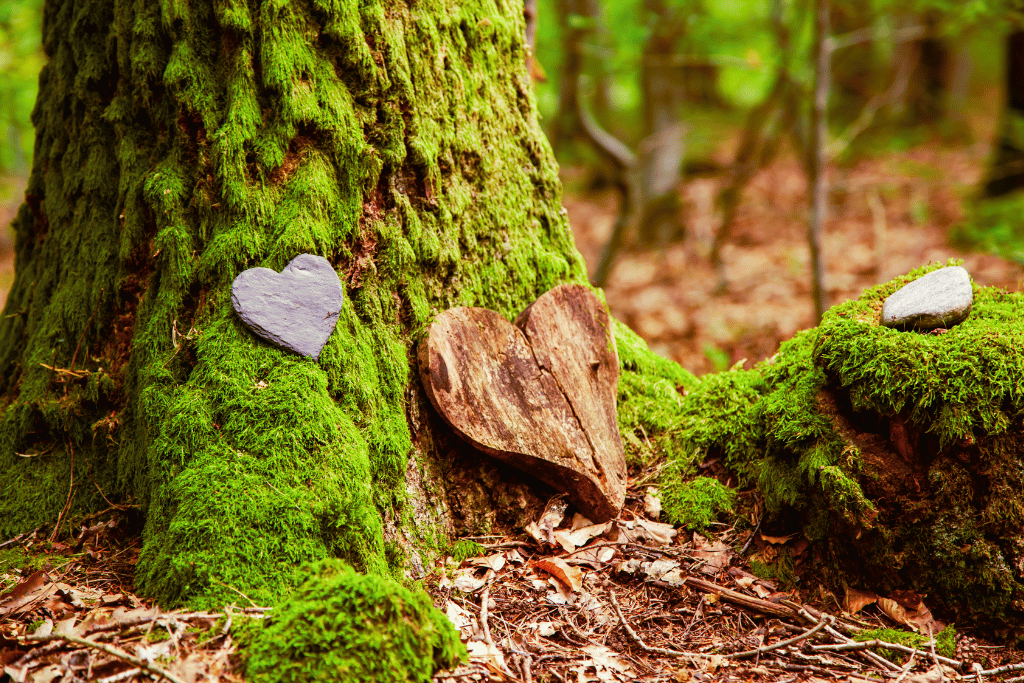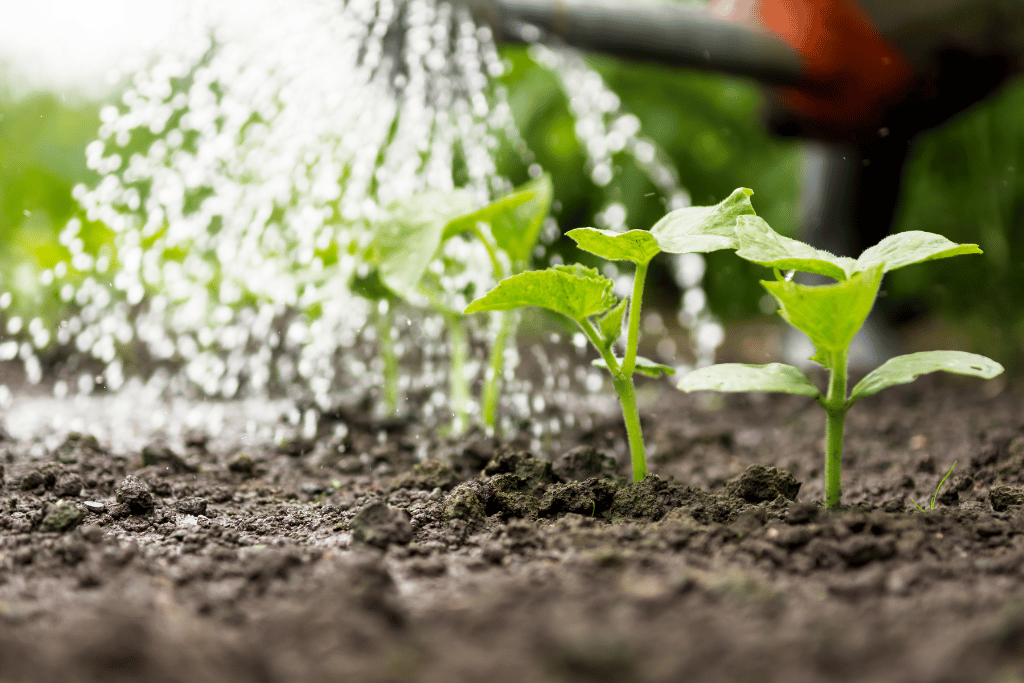
Death and funerals are often seen as a celebration of one’s life. It’s hardly easy to feel like celebrating during times of mourning and despair. But to fill this missing space, passed loved ones are memorialized by propagating new life.
In my estimation, planting a tree is a wonderful way to honor the legacy of a lost loved one. Let this simple gesture be the beginning of the road to recovery and acceptance. As the soul passes on to a higher plane, they can smile down on family and friends celebrating their life through the dedication of a tree in their memory.
Trees are strong, sturdy and dependable. One planted in memorial reminds those grieving to take on these characteristics and to live a productive fruitful life as the deceased would have wanted.
In this article, we’ll discuss what trees make the best memorials. Trees have individual characteristics and personalities much like people. Find the tree that best represents your loved one and ensures that their spirit lives on for generations to come.
Red Maple (Acer rubrum)

The bursting, bright crimson buds of red maple trees will ignite passion and stoke emotional memories of loved ones past. Towering to heights of 40-70 feet this fiery North American native maple will impress with dramatic fall foliage. Expect yellow, orange and vivid red leaves as the season fades. Red maples are an excellent selection to esteem a lively, creative and passionate life.
Red maple will grow without issue in hardiness zones 3-9, which includes all of the United states except for southern Florida and desert climates in the southwest. Select a site that receives full sun and has moist, moderately fertile soil.
Shallow, thick roots can be disruptive to other surrounding plants or nearby structures. Dedicate a special solitary place to plant your memorial red maple.
Sargent Cherry Tree (Prunus sargentii)

Those who have visited Japan or Washington DC in the springtime are familiar with the astounding multitude of bright pink blossoms produced by cherry trees. As spring is a season of eternal hope, it will prove to be an extra special time to reminisce about your loved ones.
Gorgeous pink blooms will inspire peace and the strength to move forward. The tiny fruits of the sargent cherry tree will charm native birds to sing sweet elegies for those who have passed on.
Zones 4-7 will support the elegant cherry tree and its fragrant flowers. These zones include virtually all of the cold regions of the states down to just south of the Mason-Dixon Line. As far as cherry trees go, sargent is among the hardiest.
Even in shady locations, it will reliably produce memorable blossoms and beneficial fruit every spring for the foreseeable future. Let the warm spring breeze and tender pink flowers remind you of a loving, caring soul who has passed on.
Rose Bush (Rosa rubiginosa)

Rose blossoms come in every shade and hue, so select the color that aligns with the favorite of your loved one. Cultivate your rose bush as you did your fond relationship by planting it among other flowers in the garden.
Make it a centerpiece that will forever commemorate a loyal friend or dedicated family member. The warm-weather blossoms and their comforting apple aroma will certainly help heal your mourning heart.
Consider a rose bush if you live in zones 5-8, which encompass all but the most extreme hot and cold regions of the country. Plant your memorial shrub in a full sun site and watch it explode with foliage and buds that unfurl into ravishing roses. Deadhead spent blossoms and prune to the shape of your liking so as to represent the style and flair of the dearly departed.
Blue Spruce (Picea pungens)

The majestic blue spruce tree is capable of properly memorializing a gracious, humble figure in your life that has passed on. The conifer boasts trademark blue-green needles and adds well-shaped, symmetrical grace to any landscape.
Despite the signature color of the spruce, it will chase away your blues as you revisit happy memories spent with your loved one. Try planting yours against a brightly colored backdrop so that it draws the attention it deserves as a commemorative focal point.
Hardiness zones 2-7 will support the magnificent pine tree, ranging from the frigid temperatures of Canada down to the northern mountain regions of the southern states. Once a blue spruce is established maintenance is minimal. You can be assured that many future generations will enjoy the powerful presence of this regal evergreen.
As a personal side note concerning memorial trees, Walker family lore holds its own spruce story.
Long before my birth, one summer on a return trip from Prince Edward Island, Canada my grandfather had the idea of smuggling back across the border a couple of fine young specimens of blue spruce trees.
I guess he thought they’d look sharp in his backyard one-thousand miles away and just had to have them. Anyhow, they were dug up and packed away into a car already full of kids and luggage.
Miraculously he was able to successfully conceal and bootleg the contraband back into the states, giving my grandmother a near-death asthma attack the entire 16-hour trip!
Well, those trees must have been destined for their backyard because they still stand there today as a reminder of my grandfather’s foray into trans-border tree running.
And they sure do look sharp!
We love him and miss his quirky personality and wildly entertaining antics.
Weeping Willow (Salix babylonica)

There is no tree quite as melancholy as the weeping willow. It suits the mood of broken-hearted mourners and makes the perfect company for those who want to peacefully reflect on fond memories of the past. Drooping branches and leaves chatter sorrowfully and whisper on the wind.
The cheerful side of the weeping willow tree is that it grows rapidly, reminding all that life must go on regardless of unhappy passings. Shortening days and cool evenings bring about a fall foliage display of hopeful, bright yellow leaves. As the growing season winds down, say a prayer and give thanks to your ancestors for watching over you.
Weeping willow trees grow well in zones 4-9, encompassing the majority of the US. Make sure the gloomy tree receives full sun and plant it away from permanent structures.
The roots spread aggressively underground. Weeping willows will thrive directly on the banks of a lake or pond or in areas with consistently moist soil.
Oak Tree (Quercus)

Consider planting a mighty oak tree to memorialize a generous, dependable, larger-than-life loved one that now rests in peace. Oak trees are the great provider in nature, hosting thousands of native species. Because of this, they are personified in people who exemplify steady dependability and consistent strength.
Oak trees can live for hundreds of years, growing more than 80 feet tall with a canopy spread of 120 feet; imagine those roots! The impressive, stately stature of an oak tree will provide a private and placid shady sanctuary in the landscape.
They furnish a home and produce food for all manner of native bird and pollinator species. Carry on the legacy of your lost loved one by planting a tree that lives to provide for others.
Residing in zones 5-10, oak trees won’t sustain cold weather as well as some other trees, but they can withstand the hottest climates of the country. As benevolent as they are, regal oak trees do require an abundance of sunshine and water. Young trees should be planted in full sun and watered regularly. A layer of mulch around the base of the tree will help retain moisture and protect developing roots.
Other than light pruning of dead limbs, established oaks require little maintenance. Count on them growing big and strong, honoring the virtues of resilience and reliability for generations to come.
Olive Tree (Olea europaea)

Another dignified tree that can live to an ancient age is the olive tree. The elegant Mediterranean tree produces fruits cherished for millennia for their health-giving properties. They make the perfect memorial for those lost loves that displayed wisdom and spoke well-being to all they encountered.
Because of their native climate, olive trees can only be cultivated in zones 8-10 and prefer dry, arid regions rather than humid climates. They will need full sun and require annual pruning. Planting multiple trees will ensure cross-pollination, yielding hefty crops of olives every year.
Tips for Selecting Your Memorial Tree
The last thing a mourning heart needs is another death. So planning ahead and choosing the right memorial tree for your area is crucial. Heed these helpful tips to make sure your living monument to the deceased takes well and can be enjoyed and revered well into the future.
Right Tree, Right Place
Choose an easy-to-grow tree and make sure it is compatible with your hardiness zone. A native plant is your best bet, as it will be naturally acclimated to the climate and soil of your region.
Start with a young tree so you have control over the growing conditions and can care for it properly, enjoying all of its stages of growth. Always consider the full-grown size of the tree before choosing a permanent site. Make sure there is appropriate space for it to grow and thrive indefinitely.
Quality Costs More
Of course you don’t have to go out and spend a fortune. But for such a significant purchase, it’s best to be sure you’re getting a healthy, well-taken-care-of plant. Go to a trusted nursery or farm and buy a well-established tree that is guaranteed to transplant well and thrive.
Flowers Soothe the Soul
A flowering tree or shrub makes a living memorial that much more special. Brightly colored blossoms chase away the blues; consider the favorite flowers of your dearly departed.
Every year the blooming period will be a highly anticipated event that could correspond with a birthday or commemorate the passing of your loved one. Flowers provide a focal point that will bring back happy memories with every glance.

Select a Significant Tree
Choosing a favorite tree of your loved one creates a meaningful connection. Consider the characteristics of each tree listed above. Are there any trees that exemplify traits that you admire in your loved one? Research, deep thought and listening to your heart will ultimately lead you to the right decision.
Seek Advice
Ask for the opinion of a professional at a local nursery. They will have insight into what tree is right for your space and gardening skills. Family and friends are also able to provide counsel and offer a perspective you may not have considered.
Live in Peace
The persistence, loyalty and longevity of a tree are the perfect symbols of everlasting life. If you have any semblance of a spiritual sense, rest easy knowing that the memory of your deceased loved one will endure through your special connection to their memorial tree.



